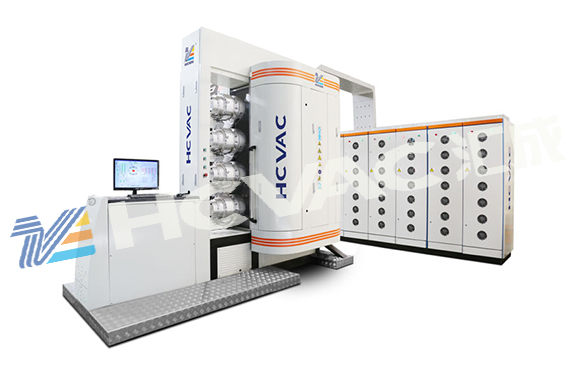PVD is the abbreviation of Physical Vapor Deposition in English, which means "physical vapor deposition" in Chinese, which refers to the thin film preparation technology of depositing materials on the plated workpiece by physical methods under vacuum conditions.

1. What is PVD coating technology?
Answer: PVD is the abbreviation of Physical Vapor Deposition in English, and it means "physical vapor deposition" in Chinese. It refers to the thin film preparation technology that uses physical methods to deposit materials on the plated workpiece under vacuum conditions.
2. What are the classifications of PVD technology? Are there any PVD vacuum coating machines?
Answer: PVD (physical vapor deposition) technology is mainly divided into three categories, vacuum evaporation coating, vacuum sputtering coating and vacuum ion coating. Compared with the three categories of PVD technology, the corresponding vacuum coating equipment also includes vacuum evaporation coating machine, vacuum sputtering coating machine and vacuum ion coating machine. In the past ten years, the development of vacuum ion plating technology is the fastest, and it has become one of the most advanced surface treatment methods.
3. What is the specific principle of PVD coating?
Answer: Physical vapor deposition is a physical vapor reaction growth method. The deposition process is under vacuum or low gas discharge conditions. The source of the coating material is a solid material. After "evaporation or sputtering", the surface of the part is formed with base A new solid substance coating with completely different material properties.
4. What are the advantages of PVD coating compared to traditional chemical plating (water plating)?
Answer: The same point of PVD coating and traditional electroless plating is that both belong to the category of surface treatment, and they both make one material cover the surface of another material in a certain way.
The difference between the two is: PVD vacuum coating machine coating film has greater bonding force with the surface of the workpiece, the hardness of the film is higher, the wear resistance and corrosion resistance are better, and the performance of the film is more stable; PVD coating The types of coatings that can be plated are more extensive, and the colors of various coatings that can be plated are more and more beautiful; PVD coating does not produce toxic or polluting substances.
6: What are the characteristics of the film coated by PVD vacuum coating machine coating technology?
Answer: The film coated by PVD vacuum coating machine coating technology has the characteristics of high hardness, high wear resistance (low friction coefficient), good corrosion resistance and chemical stability, and the life of the film is longer; at the same time The film layer can greatly improve the appearance and decoration performance of the workpiece.
7: What substrates can PVD be plated on?
Answer: PVD film can be directly plated on stainless steel, cemented carbide, titanium alloy, ceramics and other surfaces. For zinc alloy, copper, iron and other die castings, electroless chromium plating should be performed first, and then PVD plating is suitable.
8: What types of films can be deposited by PVD vacuum coating machine?
Answer: PVD coating technology is an environmentally friendly surface treatment method that can truly obtain micron-scale coatings without pollution. It can prepare various single metal films (such as aluminum, titanium, zirconium, chromium, etc.), nitride films (TiN[ Titanium Gold], ZrN [Zirconium Gold], CrN, TiAlN) and carbide films (TiC, TiCN), and oxide films (such as TiO, etc.).
9: What is the thickness of the PVD vacuum coating machine film layer?
Answer: The thickness of the PVD vacuum coating machine film layer is micron, the thickness is relatively thin, generally 0.1μm ~ 5μm, and the thickness of the decorative coating layer is generally 0.1μm ~ 2μm, so it can hardly affect the original size of the workpiece. It can improve various physical and chemical properties of the surface of the workpiece, and can maintain the size of the workpiece basically unchanged, and no further processing is required after plating.



